The CH-R is Back and Electrified! Toyota Unveils the Striking 2026 Crossover EV
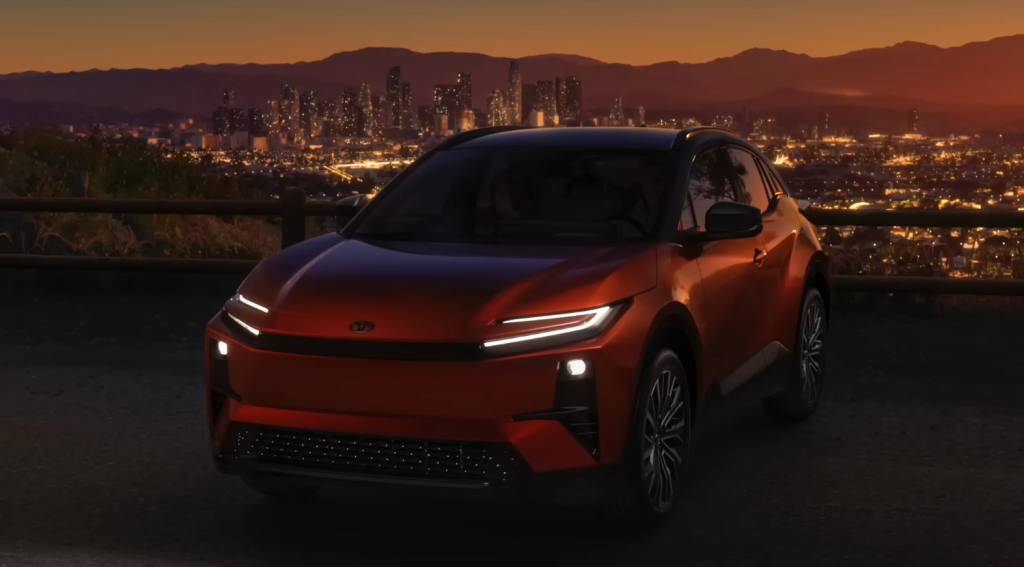
Toyota just pulled back the curtain on a vehicle that genuinely feels like a significant moment for their battery electric future. It’s the return of a familiar name, but in a completely new form: the 2026 Toyota C-HR, announced as a premium battery electric vehicle. This marks the 20th electrified vehicle in Toyota’s lineup, including hybrids and plug-ins, signaling a broad commitment to electrification. This C-HR is definitely making a statement.
Exterior Design: Making a Statement
The new C-HR absolutely makes a strong visual impact. It keeps the name that originally stood for coupe high rider, which still feels fitting. While it shares the eTNGA architecture with the BZ4X, its design is quite distinct – I’d argue much more attractive. It has this kind of “short, bulldog-like stance”. The front is striking, featuring angular styled daytime running lights with the main headlights positioned underneath. Toyota highlights the hammerhead-inspired front fascia and the lower rear bumper with a diffuser, aiming to project a sporty feel from every angle. Looking at the side, you see that characteristic coupe-like sloping rear end. Around the back, there’s a long, continuous light bar and those two subtle hunches above the rear window, reminiscent of the BZ4X. It really does have this cool, urban runner vibe. To enhance the performance aesthetic, available 20-inch alloy wheels are offered, along with available two-tone exterior colors, a nice touch we’ve seen on other Toyota models.
In terms of dimensions, it’s quite compact for a crossover. We learned it’s 177.9 inches long. For perspective, that’s about 6 inches shorter than the BZ4X, 5 inches shorter than the Ioniq 5, and nearly 10 inches shorter than the Tesla Model Y. It measures 73.6 inches wide and 63.8 inches tall, with its height being almost identical to the Model Y. So, it’s proportioned somewhat like a shorter, slightly wider Model Y.
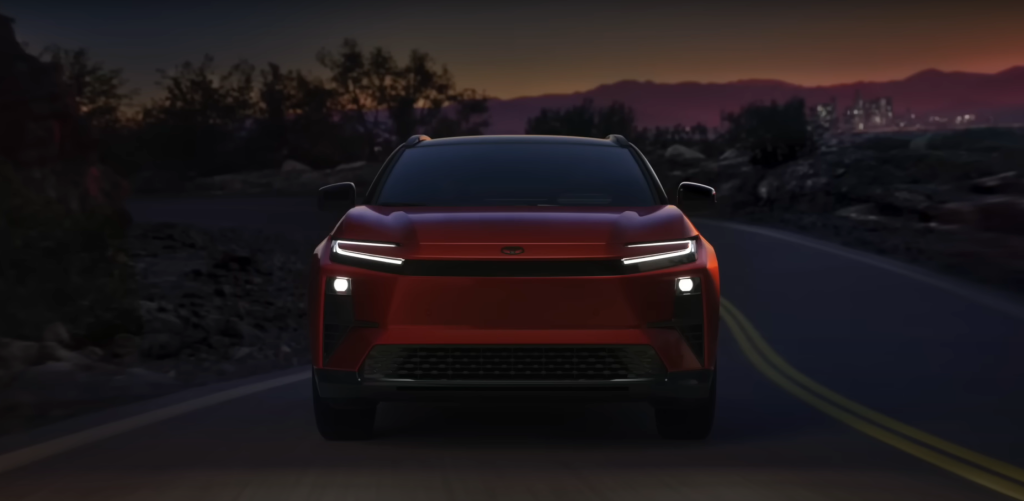
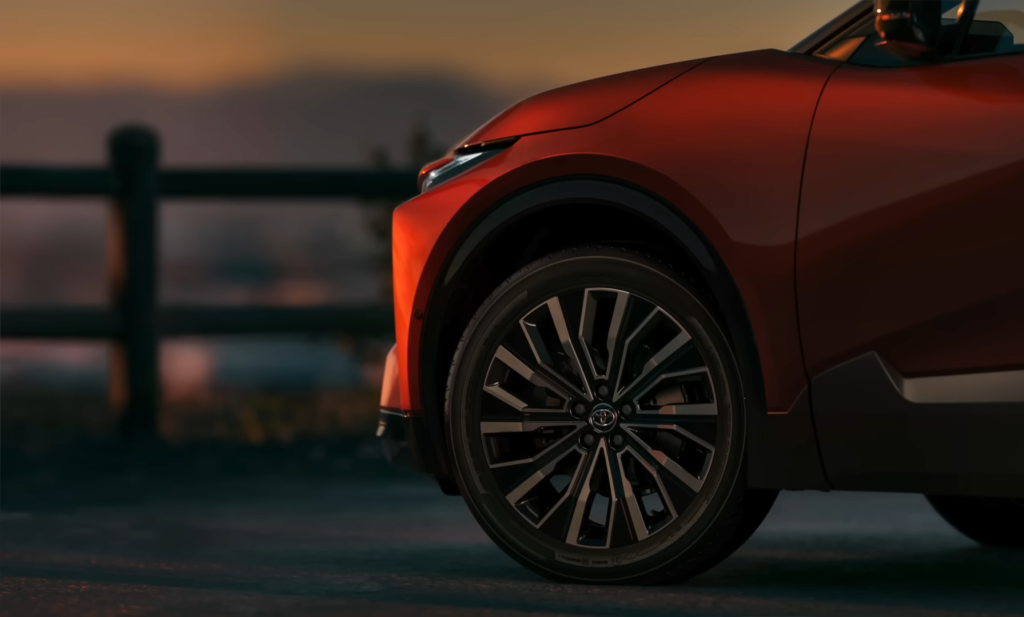
Power and Performance: Electrifying the Drive
Beneath that sharp exterior, the 2026 C-HR seems ready to bring some serious energy. It comes with standard all-wheel drive, powered by dual E-motors. Toyota states this configuration delivers 338 total system horsepower, propelling the C-HR from 0 to 60 mph in just 5 seconds. While perhaps not “crazy” compared to the highest-performance EVs out there, 5 seconds is definitely quick and certainly faster than a GR Corolla in a straight line. It sounds like more than enough performance for daily driving, cruising, or even some spirited moments. Built on the eTNGA platform, the underbody-mounted battery contributes to a low center of gravity and agility. Plus, drivers get standard paddle shifters to adjust the intensity of the regenerative braking.
Charging Up: Confidence and Flexibility
Toyota is clearly prioritizing charging convenience and flexibility with the new C-HR. They are targeting DC fast charging from 10 to 80% capacity in approximately 30 minutes under ideal conditions. This appears to be a notable improvement. The vehicle includes a battery preconditioning function to help optimize DC fast charging performance, particularly in cold weather. This is definitely a must-have for road-tripping.
One of the most significant announcements, described by some as a “computer closing moment,” is that the C-HR is launching in the US in 2026 with the North American Charging System (NACS) port standard. This makes it Toyota’s first vehicle to adopt the NACS standard from the outset, providing access to thousands of DC fast charging stations across North America. This promises more charging options and greater confidence on the road. Adding to the ease is Plug-and-Charge technology, designed for a seamless public charging experience with select providers; once set up in the Toyota app, you can simply plug in with compatible chargers without extra apps or payment steps. The Toyota app will also display NACS-supported charging locations and real-time status, including charge level, rates, and estimated completion time.
For home charging, the C-HR features a standard 11 kW onboard charger. This is a good step up from the 6.6 kW charger initially found in the BZ4X, allowing owners to maximize faster Level 2 charging speeds when available. Every Toyota battery EV, including the C-HR, also comes equipped with an NACS-enabled portable dual-voltage charging cable for both Level 1 and Level 2 charging at home.
Stepping Inside: Comfort and Tech Integration
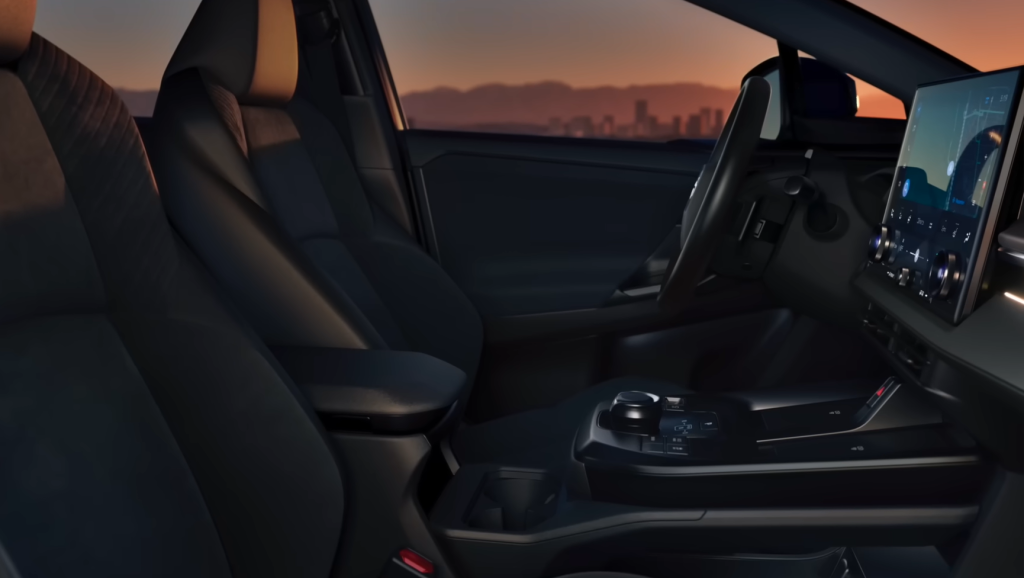
Stepping inside, Toyota seems to have focused on a blend of comfort, sportiness, and technology. The seating is sculpted for a comfortable feel. Comfort and convenience features include a standard power liftgate, heated front seats (with power adjustability for the driver and manual for the passenger), and a heated steering wheel. We also heard about standard dual wireless charging pads and three USB-C ports (one in the front, two in the rear). An available fixed panoramic glass roof is there to bring in more natural light. The rear seats offer a standard 60/40 split fold-down. The driver’s gauge cluster is positioned higher, which is intended to help drivers keep their eyes on the road, although some designs with this setup can sometimes have the steering wheel partially block the view depending on driver position.
For technology, the C-HR comes standard with the Toyota Audio multimedia platform and an expansive 14-inch touchscreen. It includes wireless Apple CarPlay and wireless Android Auto compatibility. An available 9-speaker JBL premium audio system with a subwoofer and amplifier is offered for enhanced sound. A standard 3-month Sirius XM trial is also included. The operating system appears to be the same seen across the Toyota lineup; while initially disliked by one source, they now find it functional, easy to use, and self-explanatory, if not as flashy as some competitors. It features user profiles. Notably, one source mentioned the interior being a “sea of black” in the pictured model, lacking contrast, and the absence of a glove box initially, similar to the BZ4X.
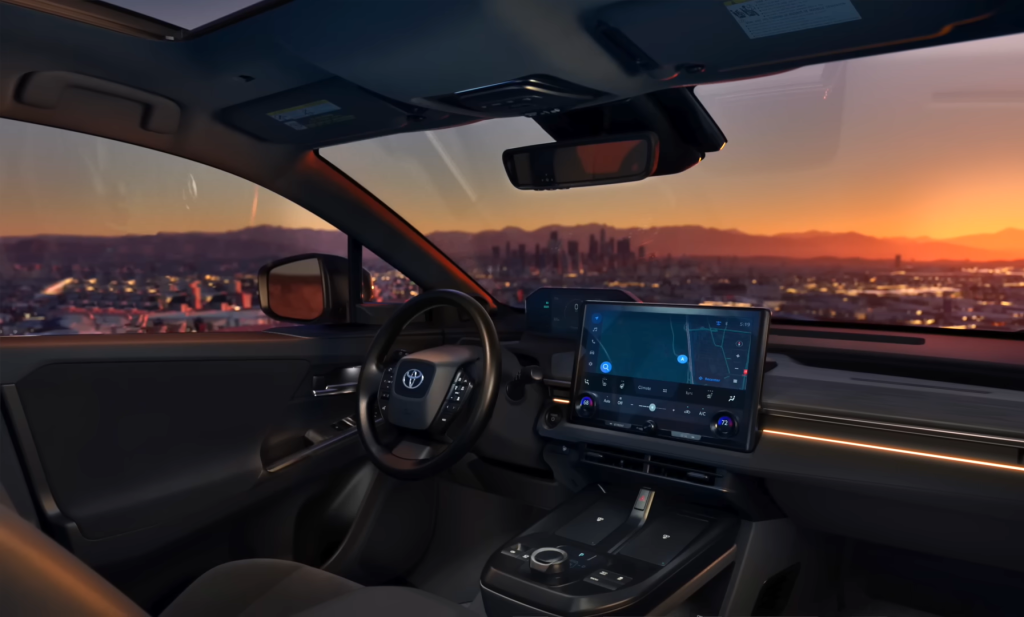
Safety and Assistance: Comprehensive Suite
Safety is well-covered with a comprehensive suite of technologies. Toyota Safety Sense 3.0 is standard, including features like pre-collision system with pedestrian detection, lane departure alert with steering assist, automatic high beams, full-speed range dynamic radar cruise control, lane tracing assist, road sign assist, and proactive driving assist. Additional standard safety features include blind spot monitor with rear cross traffic alert and front and rear parking assist with automatic braking. For help in tight spots, there’s an available panoramic view monitor. Features like Traffic Jam Assist and Lane Change Assist are also mentioned for the XSE trim.
Practicality and Outlook: Room for Hope
Considering practicality, the sloping rear roofline does raise a question about rear seat headroom, and it will be interesting to see how spacious it feels. Cargo space is listed at 25.4 cubic feet (25.8 with the JBL system) behind the rear seats. This sounds like a decent amount for a smaller car and could potentially serve small families or couples on shorter trips. It’s not dramatically different from the BZ4X in terms of cargo volume on paper, though the shape of the opening might differ.
The 2026 Toyota C-HR is expected to arrive at US dealerships sometime in 2026. While no specific date in 2026 was given, it seems we’re roughly a year out. It will be available in two initial trims: the base SE and the upper XSE, which adds more features and styling details. Standard wheels are 18-inch, with 20-inch wheels available.

There’s definite excitement about the targeted 290 miles of range and the faster charging capabilities. Some sources did express a little concern about discharging performance on long road trips compared to other EVs, but the standard NACS port and battery preconditioning are certainly positive signs. Toyota is also hopeful this model can contribute to bringing more affordable options to the segment, although pricing details haven’t been revealed yet.
Overall, this announcement shows Toyota taking some confident steps forward with their battery electric lineup. The 2026 C-HR looks like a compelling package with its distinctive styling, solid performance figures, significantly improved charging capabilities, and a comprehensive suite of tech and safety features. It promises an exhilarating and electrified drive. We’re definitely looking forward to learning more and seeing how it performs in the real world!
